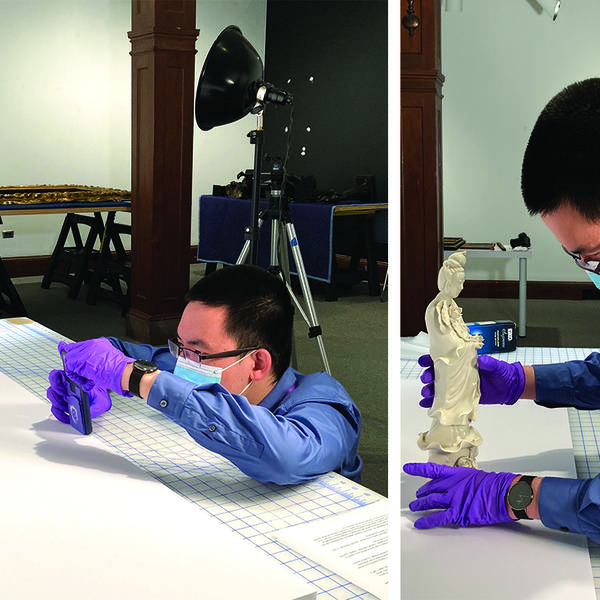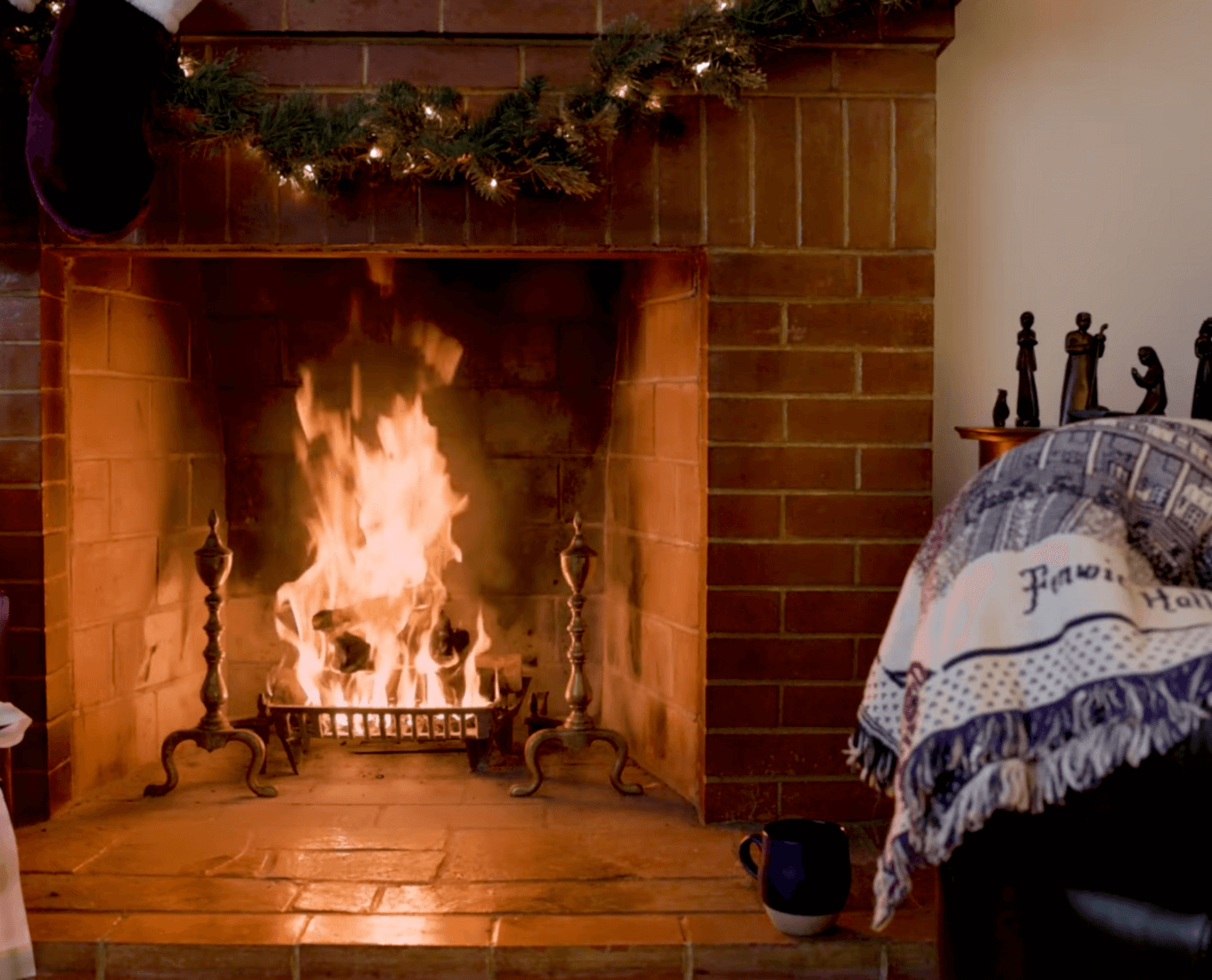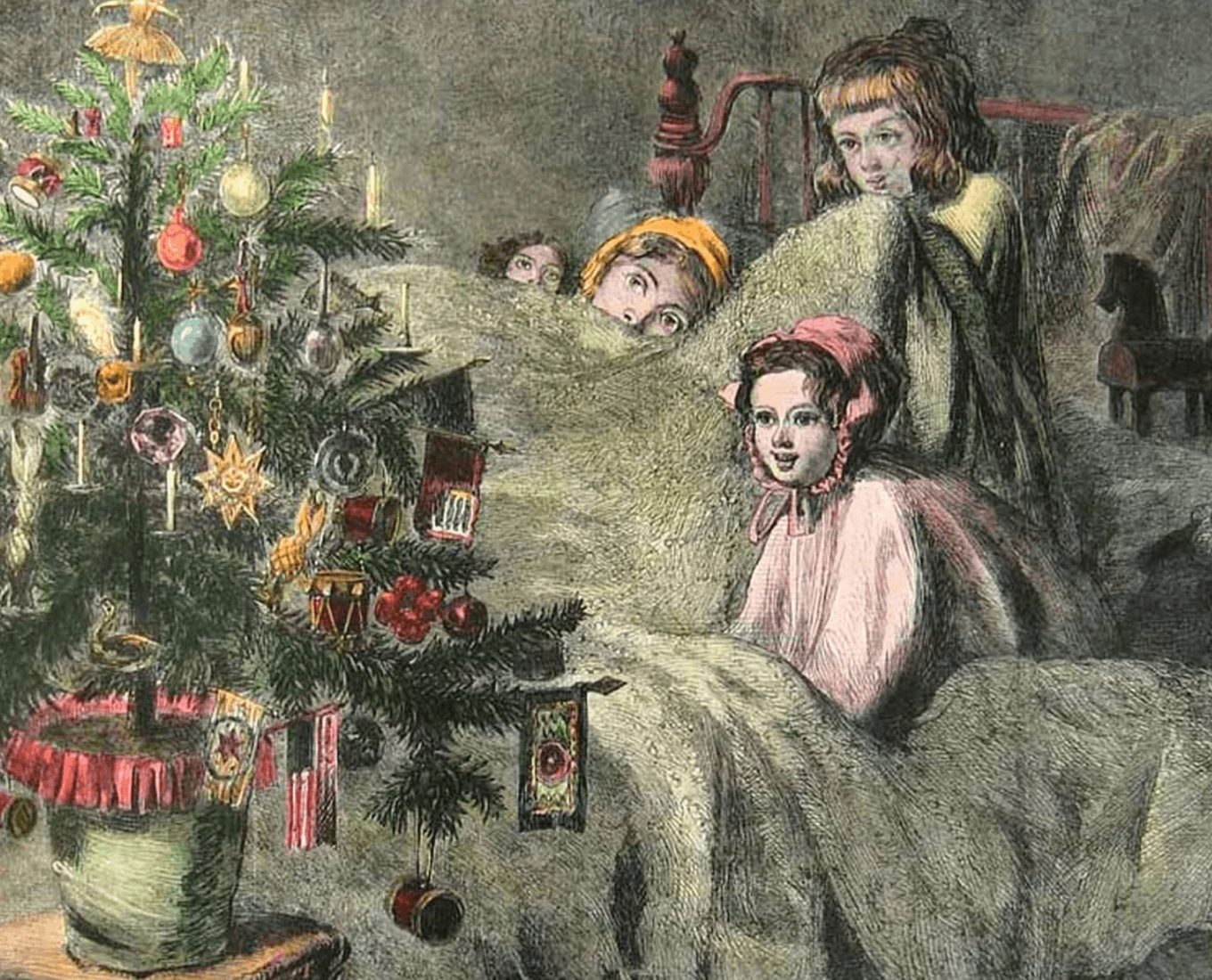As a history and art history double major, Jinze Mi '23 is used to studying art in the classroom. But this summer, through the Weiss Summer Research Program, he was surrounded by it. Under the expert guidance of Meredith Fluke, director of the Iris and B. Gerald Cantor Art Gallery, Mi helped to research, catalogue and preserve the College's art collection — more than 2,500 pieces amassed over the last 150 years from generous donors.
"It really gives me a very different experience with art," says Mi, who has done everything from carefully unframing paintings and photographing pieces to researching works of unknown origins. "Now I have a rare chance to look at art closely, and I can figure out how the artists decorated these artworks, often with beautiful pigments or techniques."
Developing a public catalogue of the many works housed both at the Cantor Art Gallery and in collections across campus will help the College community better utilize the rich objects at their disposal, Fluke says: "The only way we can use them is if we know more about them." And with the Cantor's upcoming move from O'Kane Hall to the new Prior Center for Performing Arts, Fluke notes it's crucial to thoroughly document and prepare pieces for transport across campus.
"It's a mutually advantageous system, where students like Jinze can learn about research, preservation, and conservation — all the pieces that go into collections stewardship — while we continue to expand our knowledge of the works of art. That way we can better integrate the collections into the college curriculum," Fluke explains.
To help them piece together the history behind certain works in the College's collection, Mi and Fluke took field trips to area museums. "This is one of the most exciting parts of our research," shares Mi, who discovered similarities between Japanese porcelain housed at Holy Cross and 18th and 19th century Japanese porcelain, called Kutani ware (九谷焼 kutani yaki), at the Peabody Essex Museum in Salem, Massachusetts. "These trips also offer curatorial inspiration for everything from storytelling and labelling to display and lighting techniques," Fluke says. She and Mi are using all of this research as they prepare for an upcoming display of Asian export art that will be exhibited in the Cantor Resource Gallery.
But not all art mysteries will be solved. And wrestling with unknowns is a key part of what students experience while conducting graduate-level work through the Weiss Summer Research Program. "One way in which this is not your typical college experience is that there are frequent research dead ends — Jinze has been learning the art of letting go when you are beating your head against the wall. Many of the works of art have no information attached to them, and we are often fully reliant on what we can see. For some works, we might never know who made them, or how they got to Holy Cross," Fluke says. Throughout the summer, Fluke has listened closely to Mi's goals and worked to support his overall development — something Mi appreciates.
"This experience has been very helpful for me to learn more about and become more interested in the field of art history and museum practice," reflects Mi, who is from Tientsin, China. "Dr. Fluke has helped me grow as an aspiring PhD candidate in early Chinese art and as a future museum professional — those are some of my biggest academic and professional goals."
This profile appears as part of the Holy Cross Student Summer series.
Art History Internship at Holy Cross – Holy Cross Student Summer Series

Jinze Mi '23 and Dr. Meredith Fluke are spending the summer researching, cataloguing and preserving 150 years' worth of art at the College
Read Time
3 Minutes


